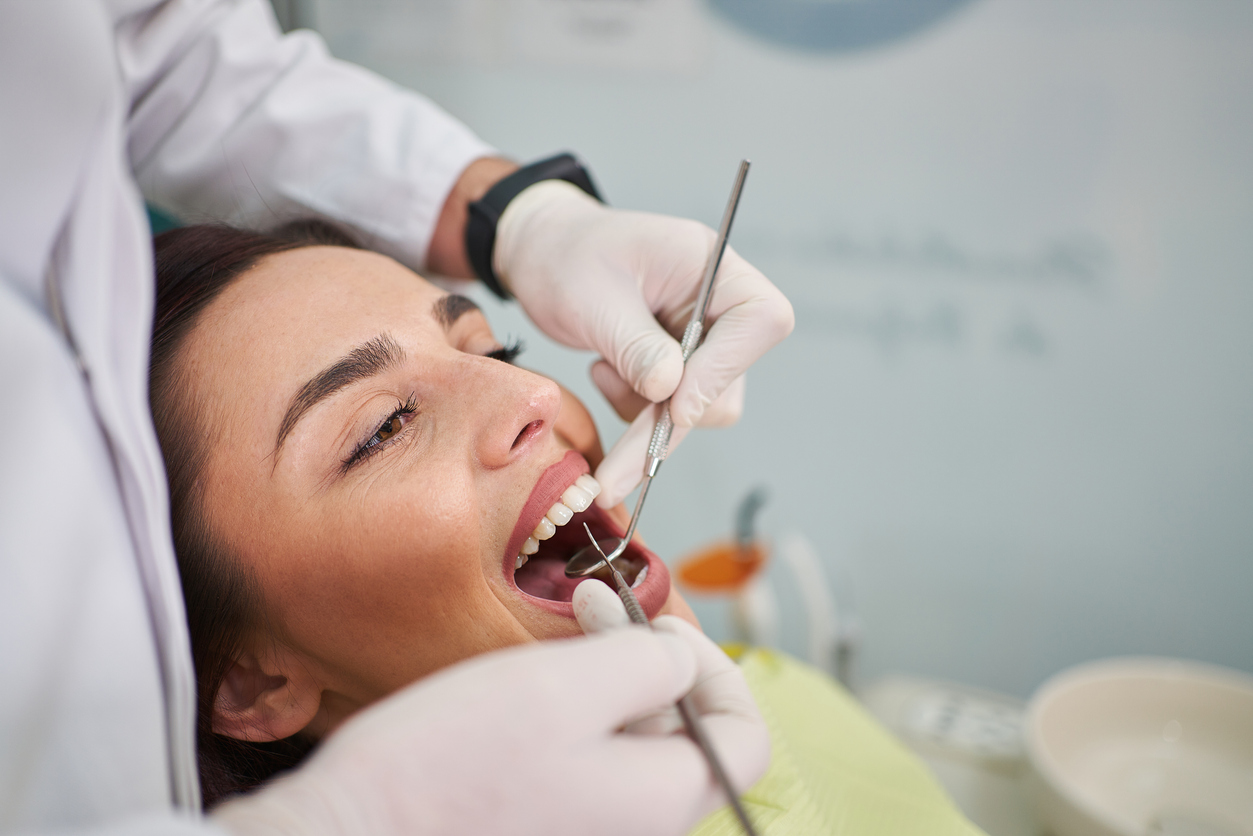Maintaining good dental health is about more than having an attractive smile. Problems with your teeth and gums can lead to serious, and even life-threatening, issues with your cardiovascular system and respiratory system. Thankfully, non-surgical gum disease treatments can correct gum disease without invasive surgical procedures.
What Is Gum Disease?
Periodontal disease, better known as gum disease, is a common oral health issue characterized by inflammation of the gums. In many cases, gum disease develops over time, and while it can impact people at any age, this condition is more common among adults than it is in teenagers and children.
Signs of Gum Disease
While only a licensed medical professional such as a periodontist can diagnose periodontal disease, knowing the signs and symptoms can help you spot the early signs of gum disease. These signs and symptoms include:
- Bleeding gums, especially after brushing your teeth or flossing
- Bright red, and/or swollen gums
- Pain while chewing, especially if the pain radiates outwards to one or both sides of your face
- Your teeth look longer due to a receding gum line
- Sensitive teeth to heat and/or cold
- Chronic bad breath you can’t eliminate with mouthwash or by brushing your teeth
- One or more teeth are loose
If you notice any of these problems, you should contact your periodontist to check for periodontal disease. When diagnosed early, most patients are good candidates for non-surgical gum disease treatments.
Diabetes, Osteoporosis Increases Risk
While anyone can develop periodontal disease, patients with certain chronic health conditions have an increased risk of oral health issues. People with diabetes often have difficulty dealing with bacterial infections, and as a result, gum disease in diabetics tends to occur more frequently than it does among non-diabetics.
There’s also a link between osteoporosis and periodontal disease, particularly among older adults. Because osteoporosis causes a decline in overall bone density, bone loss of the jaw can impact teeth and gums. If the jawbone deteriorates, high levels of periodontal bacteria build up in the affected areas, leading to gum disease.
Long-Term Impact of Poor Dental Health
Not only can poor dental hygiene have a negative impact on your appearance, but it can have serious, long-term consequences.
Tooth and Bone Loss
Along with gum disease, one of the most common impacts of poor dental health is tooth loss.
Left untreated, tooth decay, better known as a cavity or cavities, can quickly destroy your teeth. Just like periodontal disease, cavities begin with the buildup of harmful bacteria in your mouth. Over time, the bacteria build up on the surface of your teeth in the form of a sticky, hard plaque. This plaque thrives on dietary sugar and releases acid which breaks down your teeth. That’s why it’s so important to brush and floss your teeth and keep up with your regular dental cleanings.
In severe cases, tooth loss can spread to the jawbone, leading to painful, irreversible bone loss.
Cancers
There is growing evidence that there is a link between advanced gum disease and some types of cancer. The results of the Atherosclerosis Risk in Communities Study show that study participants with severe gum disease had a 24% increase in the risk of developing cancer compared to those with either mild or no, gum disease.
Irreversible Gum Disease
When detected early enough, non-surgical gum disease treatment can be highly effective at halting the disease progression. On the other hand, if left untreated gum disease becomes chronic and irreversible.
This stage of gum disease impacts the tissue that surrounds and supports the teeth, and it often leads to ongoing health problems such as poor nutrition, chronic pain, and the need for costly dental treatments such as dental implants and dentures.
What Does Non-surgical Gum Disease Treatment Involve?
When it comes to non-surgical gum disease treatment, there’s no such thing as a one-size-fits-all solution. Each patient must be carefully assessed in order to determine the extent of the disease. This assessment may involve the use of dental x-rays to check for bone loss, probing any pockets around the teeth, and discussing your medical history. The periodontist will also ask about any over-the-counter and prescription medications you have taken, or currently take.
Scaling and Root Planing
Scaling and root planing is one of the most effective non-surgical gum disease treatments. This treatment involves deep cleaning of the teeth, including a portion of the teeth that extends below the gum line with scaling. Root planing promotes gum health by smoothing the tooth roots, which helps the gums re-adhere to the teeth.
Prescription Medications
Another common non-surgical gum disease treatment is the use of antibiotics. Highly specialized periodontal antibiotics are designed to be placed deep in the gum pockets by a dental professional in order to treat bacterial infections along the gumline and root. These time-released antibiotics deliver a specific dose of medication over a number of days.
Laser Gum Treatment (LANAP/LAPIP)
Laser-Assisted New Attachment Procedure, or LANAP, is an innovative non-surgical alternative gum treatment technique. It replaces traditional invasive cut-and-suture periodontal surgery.
This near-painless treatment uses medical-grade lasers to clear away infected surfaces. It also removes tartar and plaque build-up and reduces pockets between the teeth and gums that harbor harmful bacteria. By shrinking the depth and width of these pockets, the most damaging bacteria are eliminated, allowing for new bone and periodontal ligament growth.
Learn More About Non-surgical Gum Disease Treatment in Phoenix
As an accomplished Phoenix periodontist who is fluent in English and Spanish, Dr. Trujillo has advanced training in the diagnosis and treatment of gum disease using non-invasive techniques. To find out if non-surgical gum disease treatment is right for you, contact Dr. Trujillo for a confidential consultation.





